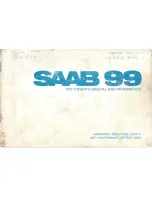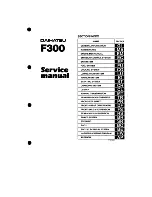
2-51
SECOND (2): This position gives you more power, but
lower fuel economy. You can use SECOND (2) on hills.
It can help control your speed as you go down steep
mountain roads, but then you would also want to use
your brakes off and on.
NOTICE:
Don’t drive in SECOND (2) for more than
25 miles (40 km), or at speeds over 55 mph
(90 km/h), or you can damage your transaxle.
Use THIRD (3) or AUTOMATIC
OVERDRIVE (D) as much as possible. Don’t
shift into SECOND (2) unless you are going
slower than 65 mph (105 km/h) or you can
damage your engine.
NOTICE:
If your vehicle seems to start up rather slowly, or
if it seems not to shift gears as you go faster,
something may be wrong with a transaxle system
sensor. If you drive very far that way, your
vehicle can be damaged. So, if this happens, have
your vehicle serviced right away. Until then, you
can use SECOND (2) when you are driving less
than 35 mph (55 km/h) and THIRD (3) for
higher speeds.
Summary of Contents for 2002 Venture
Page 1: ......
Page 6: ...v These are some examples of vehicle symbols you may find on your vehicle ...
Page 38: ...1 32 Put someone on it Get it up to speed Then stop the vehicle The rider doesn t stop ...
Page 206: ...2 98 The Instrument Panel Your Information System ...
Page 434: ...6 62 GM Vehicle Care Appearance Materials ...
Page 453: ...Scheduled Maintenance 7 7 ...
Page 454: ...Scheduled Maintenance 7 8 ...
Page 471: ...7 25 Maintenance Record DATE ODOMETER READING SERVICED BY MAINTENANCE PERFORMED ...
Page 472: ...7 26 Maintenance Record DATE ODOMETER READING SERVICED BY MAINTENANCE PERFORMED ...
Page 473: ...7 27 Maintenance Record DATE ODOMETER READING SERVICED BY MAINTENANCE PERFORMED ...
Page 474: ...7 28 Maintenance Record DATE ODOMETER READING SERVICED BY MAINTENANCE PERFORMED ...
















































